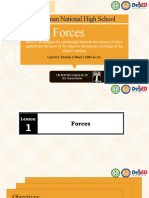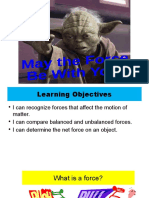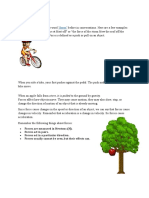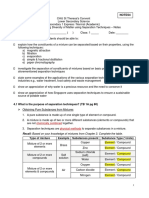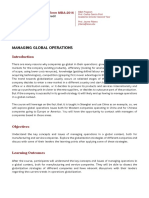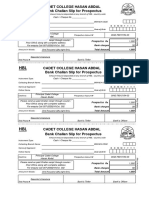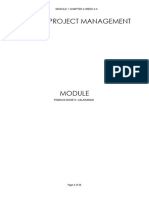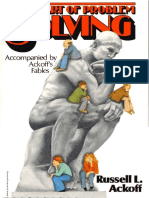Created by Turbolearn AI
Forces 🌟
What are Forces?
A force is a push or pull that can cause an object to change its motion.
Characteristics of Forces
Magnitude: the size or strength of the force, commonly expressed in Newton (N)
Direction: the direction of the force, indicated by the direction of the arrowhead
Point of Application: the location where the force is applied
Line of Action: the straight line passing through the point of application and
parallel to the direction of force
Types of Forces
Contact Forces: forces where objects touch or contact with each other
Examples:
Applied force: a force given to a person or object by another person
or object
Friction: a force that opposes motion between two surfaces in contact
Normal force: a force exerted by a surface on an object in contact
with it
Non-Contact Forces: forces that act on an object without physical contact
Examples:
Gravitational force: a force that attracts objects with mass towards
each other
Magnetic force: a force that acts between magnetic fields
Effects of Forces on Motion
Condition Effect on Motion
Object remains at rest or moves at a constant
No force applied
velocity
Force applied in the same direction as
Object accelerates
motion
Force applied in the opposite direction of
Object decelerates
motion
Force applied perpendicular to motion Object changes direction
Page 1
� Created by Turbolearn AI
Key Concepts
Net Force: the overall force acting on an object, resulting from the combination
of all forces acting on it
Balanced Forces: forces that cancel each other out, resulting in no net force
Unbalanced Forces: forces that do not cancel each other out, resulting in a net
force
Review Questions
Question Answer
What is the unit of force in the metric system? Newton (N)
What type of force always pulls objects towards
Gravitational force
the ground?
What happens to an object when a force is The object may change its motion, speed, or
applied to it? direction
Types of Forces
There are two main types of forces:
Contact Forces: forces that act on an object through direct contact with another
object
Non-Contact Forces: forces that act on an object without direct contact with
another object
Contact Forces
Contact forces are forces that act on an object through direct contact with another object.
Examples of contact forces include:
Applied Force: a force applied to an object by another object, such as a push or
a pull
Frictional Force: a force that opposes the motion of an object, such as the force
that slows down a rolling ball
Normal Force: a force that acts perpendicular to the surface of an object, such
as the force that keeps a book on a table from falling
Tensional Force: a force that acts on a string, rope, or cable, such as the force
that holds a hanging ball in place
Non-Contact Forces
Page 2
� Created by Turbolearn AI
Non-contact forces are forces that act on an object without direct contact with another object.
Examples of non-contact forces include:
Gravitational Force: a force that attracts two objects with mass towards each
other, such as the force that keeps the Earth in orbit around the Sun
Magnetic Force: a force that acts on magnetic materials, such as the force that
attracts a magnet to a piece of metal
Balanced and Unbalanced Forces
Balanced Forces: forces that are equal in magnitude and opposite in direction,
resulting in no change in motion
Unbalanced Forces: forces that are not equal in magnitude and/or opposite in
direction, resulting in a change in motion
Net Force
The Net Force is the sum of all forces acting on an object. It is represented by the symbol Σ
(sigma).
Force Description
F Applied Force
Ff Frictional Force
FN Normal Force
T Tensional Force
Fg Gravitational Force
Fm Magnetic Force
Calculating Net Force
To calculate the net force, add all the forces acting on an object along the same line of action.
Use the algebraic signs + and - to indicate the direction of forces.
"The net force is the sum of all forces acting on an object. It is represented by the
symbol Σ (sigma)."
Example
If the force of gravity (Fg) and the normal force (FN) are acting on an object, and both forces
have a magnitude of 3 N, the net force along the vertical line is:
Fnet = Fg + FN = -3 N + 3 N = 0 N
In this example, the net force is 0 N, indicating that the object is at rest.## Forces in Action 🚀
Page 3
� Created by Turbolearn AI
Balanced and Unbalanced Forces
Forces can be either balanced or unbalanced. When the net force acting on an object is zero,
the forces are considered balanced. On the other hand, when the net force is not equal to zero,
the forces are unbalanced.
"A balanced force is a force that is equal in magnitude and opposite in direction to
another force, resulting in no net force acting on an object."
"An unbalanced force is a force that is not equal in magnitude or opposite in
direction to another force, resulting in a net force acting on an object."
Adding Forces
Forces can be added together to find the net force acting on an object. When adding forces, it is
essential to consider the direction of each force.
When forces are in the same direction, add their magnitudes.
When forces are in opposite directions, subtract their magnitudes.
Example: Tug-of-War
Consider a tug-of-war game between two teams, A and B. Team A exerts a force of 1000 N,
while Team B exerts a force of 1300 N.
Team Force (N) Direction
A 1000 Left
B 1300 Right
To find the net force, subtract the forces:
F_net = F_B - F_A = 1300 N - 1000 N = 300 N (to the right)
Since the net force is not equal to zero, the forces are unbalanced, and Team B wins the game.
Net Force and Motion
The net force acting on an object determines its motion.
If the net force is zero, the object is at rest or moving at a constant velocity.
If the net force is not zero, the object accelerates in the direction of the net force.
Practice Problems
Page 4
� Created by Turbolearn AI
1. Two boys, A and B, are pulling a heavy cabinet at the same time with 5 N of
force each. What is the net force acting on the cabinet?
Boy Force (N) Direction
A 5 Right
B 5 Right
2. What if boy A and boy B pull the heavy cabinet at the same time in opposite
directions with 10 N and 5 N of force respectively?
Boy Force (N) Direction
A 10 Right
B 5 Left
a. What will be the net force on the cabinet? b. Will the cabinet move? c. In what direction will it
move?
Key Terms
Term Definition
Force A push or pull that causes an object to change its motion or shape.
Net Force The sum of all forces acting on an object.
Balanced Force A force that is equal in magnitude and opposite in direction to another force.
A force that is not equal in magnitude or opposite in direction to another
Unbalanced Force
force.
window.MathJax =
{
tex: {
inlineMath: [['$', '$'], ['\\(', '\\)']],
displayMath: [['$$', '$$'], ['\\[', '\\]']]
}
};
Page 5








